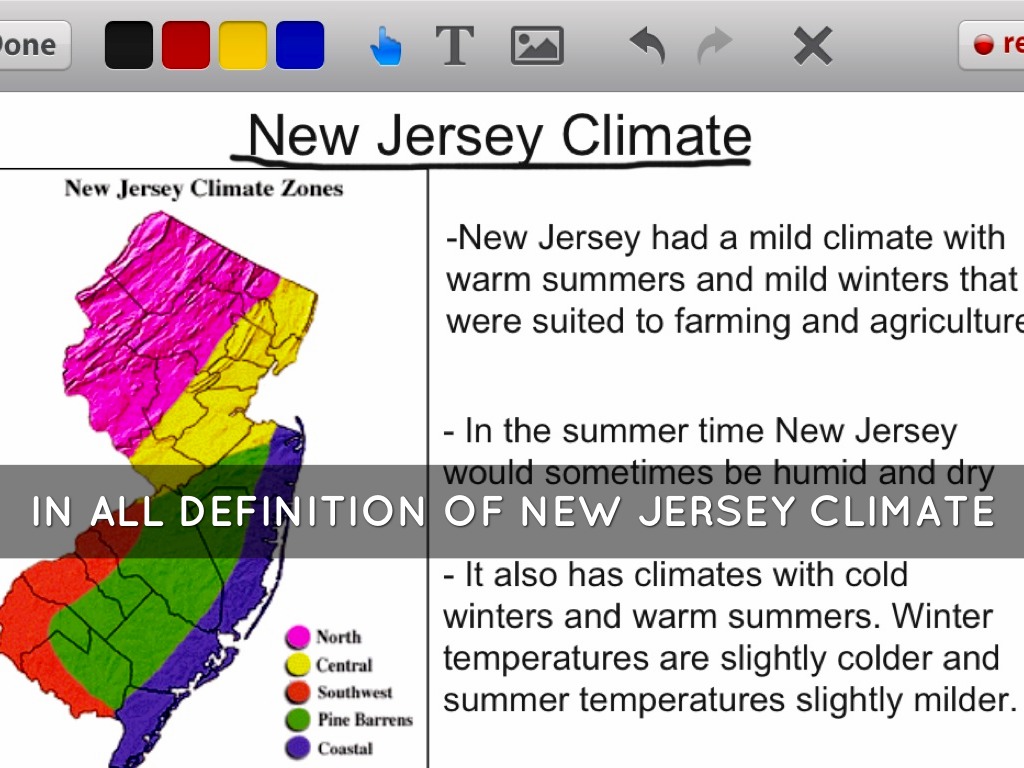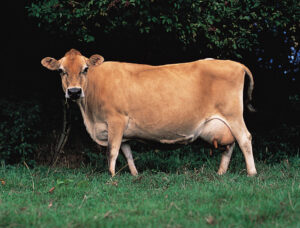New Jersey, commonly referred to as the Garden State, is a vibrant and diverse state located in the northeastern part of the United States. As with any region, the climate of New Jersey plays a crucial role in shaping its environment and overall quality of life for its residents. From its proximity to the Atlantic Ocean to its geographical features, New Jersey experiences a unique blend of weather patterns and climatic characteristics. In this article, we will explore the various aspects of the climate in New Jersey, including its temperature, precipitation, seasons, and extreme weather events.
1. Geographical Factors Influencing Climate
The climate in New Jersey is influenced by several geographical factors, which contribute to its unique weather patterns. Let’s delve into some of the key elements:
1.1 Latitude and Longitude
New Jersey lies between the latitudes of 38° 55′ N to 41° 21′ N and longitudes 73° 54′ W to 75° 35′ W. Its location on the eastern coast of the United States exposes it to the influences of both the Atlantic Ocean and the continental climate of the North American interior.
1.2 Proximity to the Atlantic Ocean
New Jersey’s proximity to the Atlantic Ocean significantly impacts its climate. The ocean acts as a moderating influence, preventing extreme temperature fluctuations and reducing the severity of heatwaves and cold snaps in the state. It also contributes to the formation of coastal weather systems and influences precipitation patterns.
2. Temperature Patterns
The temperature in New Jersey experiences distinct seasonal variations throughout the year. Here are some key characteristics of the state’s temperature patterns:
2.1 Winter Temperatures
During the winter months, New Jersey experiences cold temperatures, especially in the northern and western parts of the state. Average temperatures range from 20°F (-6.7°C) to 40°F (4.4°C) in January, with occasional Arctic blasts bringing even colder conditions.
2.2 Summer Temperatures
Summers in New Jersey are warm and humid, particularly in the southern and coastal regions. Average temperatures range from 70°F (21.1°C) to 85°F (29.4°C) in July, with occasional heatwaves pushing temperatures above 90°F (32.2°C).
2.3 Spring and Fall Temperatures
Spring and fall in New Jersey are transitional seasons, characterized by moderate temperatures. In spring, temperatures gradually rise from the cold of winter, with average temperatures ranging from 40°F (4.4°C) to 65°F (18.3°C) in April. Fall brings cooler temperatures, with averages ranging from 60°F (15.6°C) to 75°F (23.9°C) in October.
3. Precipitation Patterns
Precipitation in New Jersey is distributed relatively evenly throughout the year. Here are some key characteristics of the state’s precipitation patterns:
3.1 Rainfall
New Jersey receives an average of 45 inches (1143 mm) of rainfall annually. The highest precipitation occurs during the summer months, with June being the wettest month. Coastal areas receive slightly higher rainfall due to their proximity to the Atlantic Ocean, while the northwest region experiences slightly lower rainfall totals.
3.2 Snowfall
Snowfall varies across New Jersey, with the northern and western parts of the state receiving more snow compared to the southern and coastal areas. On average, the state receives around 25 inches (63.5 cm) of snow annually. The snowiest months are typically January and February.
4. Seasons in New Jersey
New Jersey experiences distinct seasons throughout the year, each with its own charm and characteristics. Let’s take a closer look at the four seasons:
4.1 Spring
Spring in New Jersey brings a sense of renewal and rejuvenation as nature awakens from its winter slumber. The season is characterized by blooming flowers, budding trees, and an abundance of wildlife. Temperatures gradually rise, and rainfall increases, creating a vibrant and lush environment.
4.2 Summer
Summer in New Jersey is a time for outdoor activities and enjoying the state’s beautiful beaches and coastal areas. The season brings warm temperatures, high humidity, and occasional heatwaves. It is also the peak tourist season, with visitors flocking to popular destinations such as the Jersey Shore.
4.3 Fall
Fall in New Jersey is a favorite season for many, thanks to its breathtaking display of vibrant autumn colors. As temperatures cool down, the leaves on trees change to hues of red, orange, and yellow. Fall also brings harvest festivals, apple picking, and a crispness in the air that signals the approaching winter.
4.4 Winter
Winter in New Jersey is a time of snow-covered landscapes and cozy indoor activities. While the northern and western parts of the state experience more significant snowfall, the entire state can still be affected by winter storms. The season also brings opportunities for winter sports such as skiing and ice skating.
5. Extreme Weather Events
New Jersey is no stranger to extreme weather events, which can have a significant impact on the state and its residents. Here are a few notable occurrences:
5.1 Hurricanes
New Jersey is susceptible to hurricanes, particularly along its coastal regions. In recent years, hurricanes such as Sandy in 2012 and Irene in 2011 caused widespread damage and flooding. These events serve as a reminder of the importance of preparedness and resilience in the face of natural disasters.
5.2 Nor’easters
Nor’easters are powerful storms that impact the northeastern United States, including New Jersey. These storms bring heavy snowfall, strong winds, and coastal flooding. They often occur during the winter months and can disrupt transportation, cause power outages, and damage infrastructure.
5.3 Heatwaves
Heatwaves, characterized by prolonged periods of excessively hot weather, can occur in New Jersey during the summer months. These events pose health risks, particularly for vulnerable populations such as the elderly and young children. Heatwaves can also strain energy resources as people rely on air conditioning to stay cool.
Conclusion
The climate of New Jersey is diverse and ever-changing, shaped by geographical factors and the state’s proximity to the Atlantic Ocean. From its distinct seasons to the occasional extreme weather events, New Jersey offers a rich tapestry of weather patterns and climatic characteristics. Understanding the climate of New Jersey is essential for residents, businesses, and policymakers alike, as it provides valuable insights into planning and preparedness for various weather conditions.
FAQs
1. Does New Jersey experience tornadoes?
While tornadoes are rare in New Jersey, they can occur, particularly during severe weather outbreaks. The state experiences an average of two tornadoes per year, with the majority being classified as weak or EF0 on the Enhanced Fujita scale.
2. Are there any unique microclimates in New Jersey?
Yes, New Jersey has a variety of microclimates due to its diverse topography. For example, the Pine Barrens region in the southern part of the state has a unique sandy soil composition that influences its climate. The Highlands region in the north is characterized by cooler temperatures and a more mountainous landscape.
3. How does climate change impact New Jersey?
Climate change poses significant challenges for New Jersey, including sea-level rise, increased frequency of extreme weather events, and changes in precipitation patterns. These impacts can lead to coastal flooding, erosion, and disruptions to ecosystems and infrastructure.
4. What is the best time to visit New Jersey?
The best time to visit New Jersey depends on personal preferences and desired activities. Summer is popular for beachgoers, while spring and fall offer milder temperatures and vibrant foliage. Winter is ideal for those interested in winter sports or enjoying cozy indoor activities.
5. How does the climate in New Jersey compare to neighboring states?
New Jersey’s climate is similar to that of neighboring states in the mid-Atlantic region, such as New York and Pennsylvania. However, its coastal location and proximity to the Atlantic Ocean give it a slightly milder climate compared to inland areas.
Summary
New Jersey’s climate is influenced by geographical factors such as its latitude, longitude, and proximity to the Atlantic Ocean. The state experiences distinct temperature patterns, with cold winters and warm summers. Precipitation is relatively evenly distributed throughout the year, with slightly higher rainfall along the coast. New Jersey has four distinct seasons, each offering unique experiences and opportunities. The state is also susceptible to extreme weather events such as hurricanes, nor’easters, and heatwaves. Understanding the climate of New Jersey is essential for residents and policymakers to ensure preparedness and resilience in the face of changing weather patterns.



